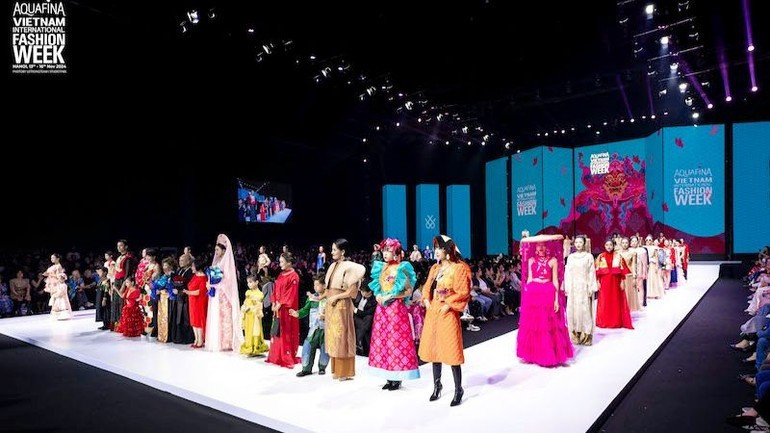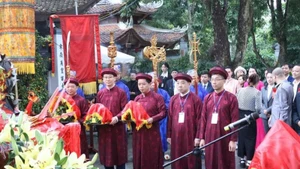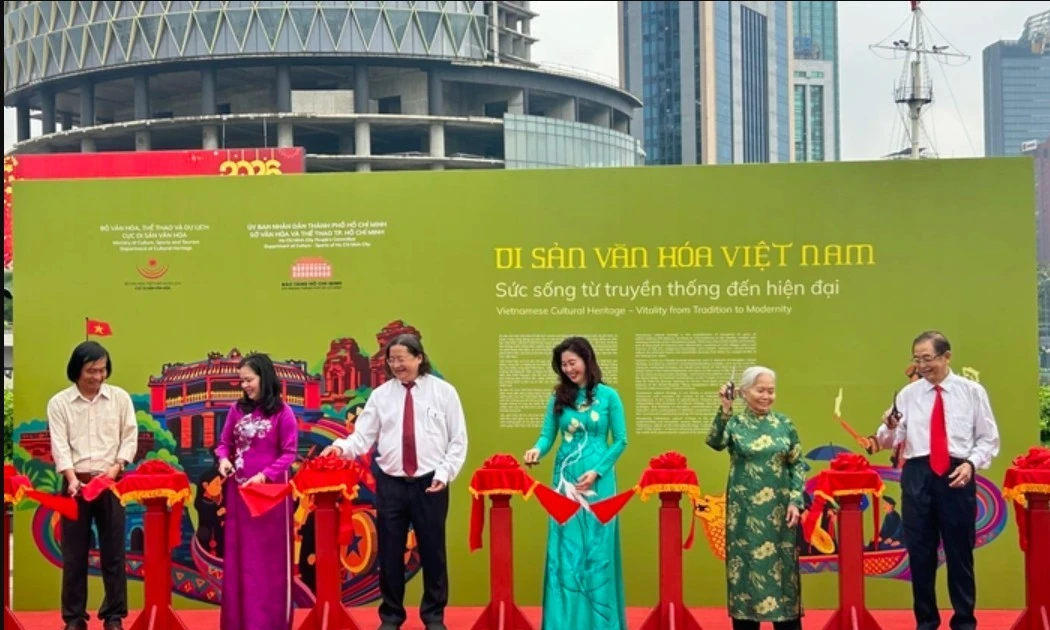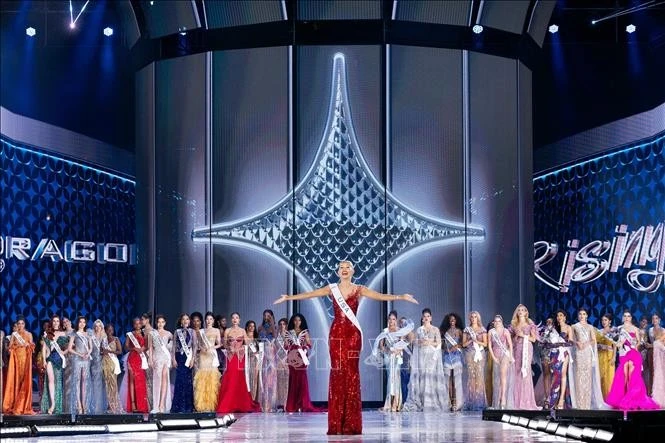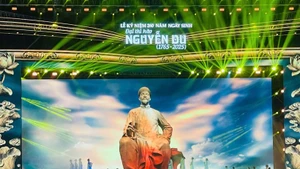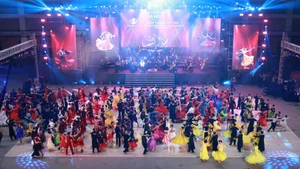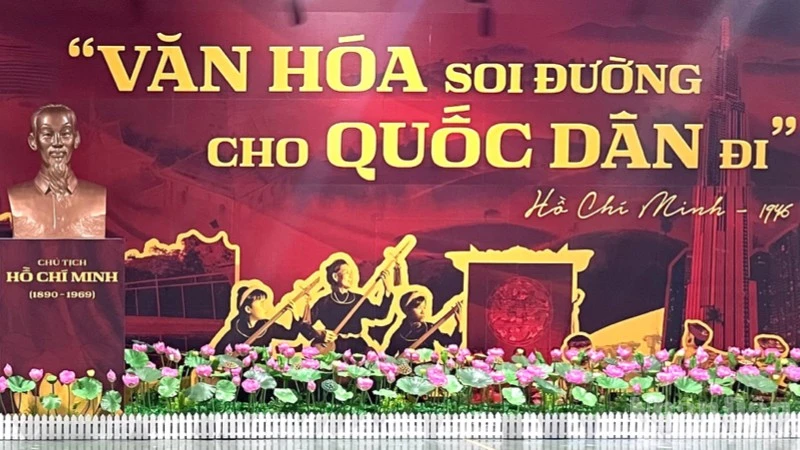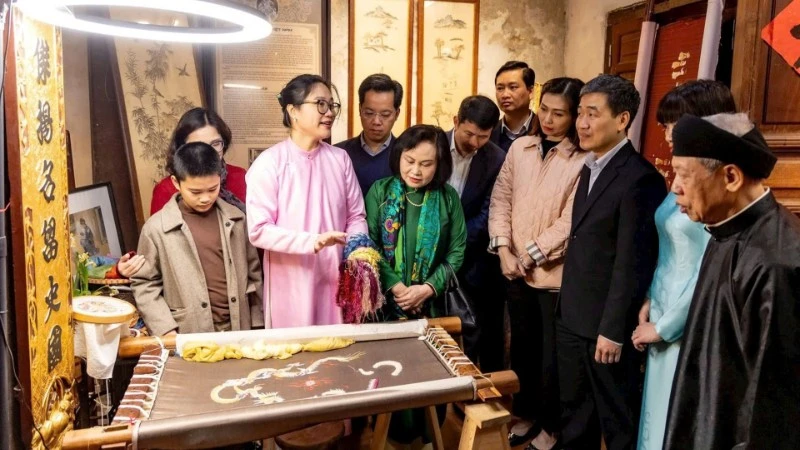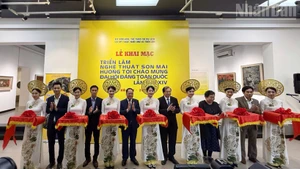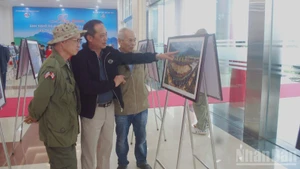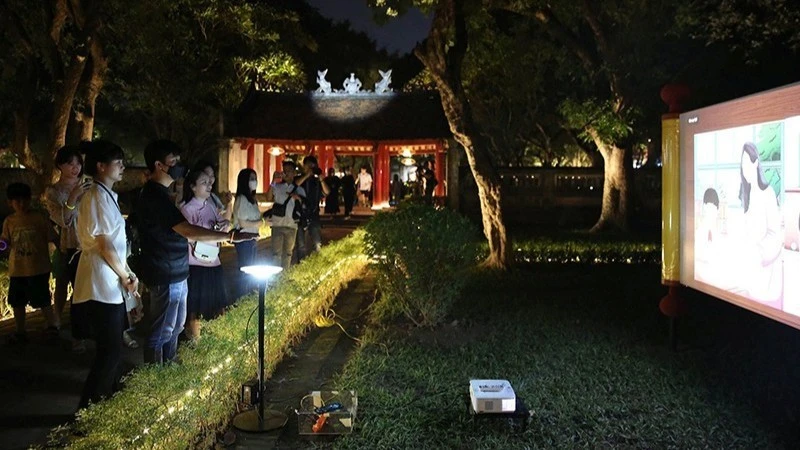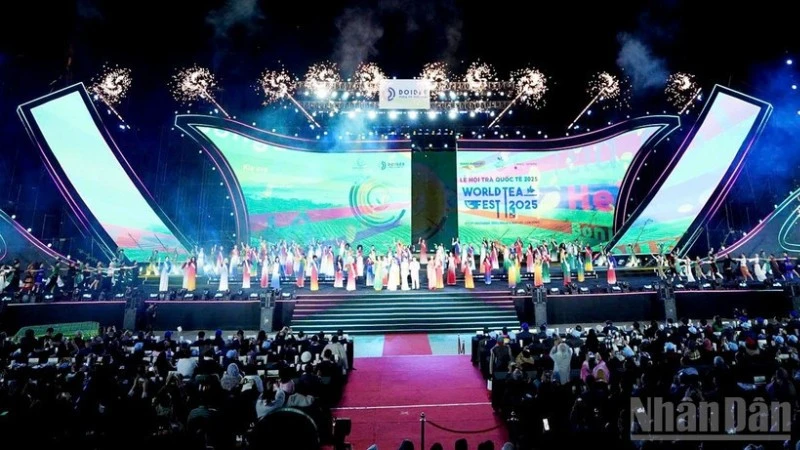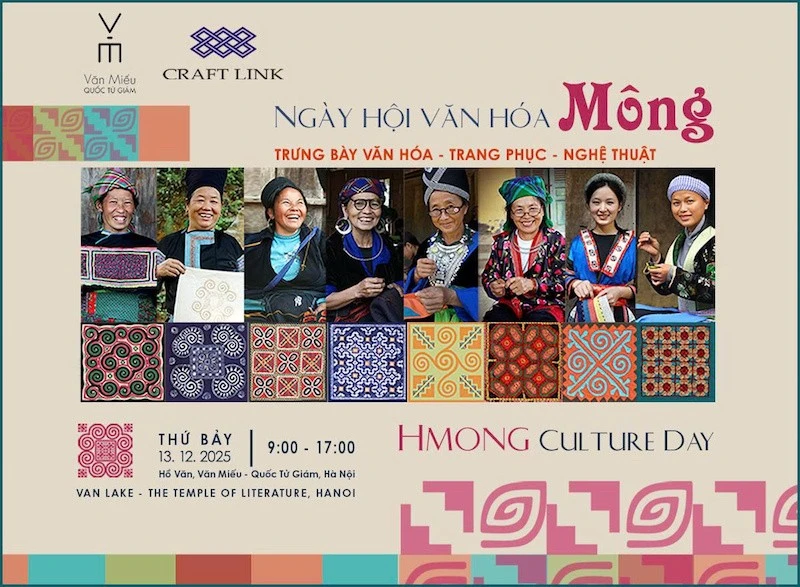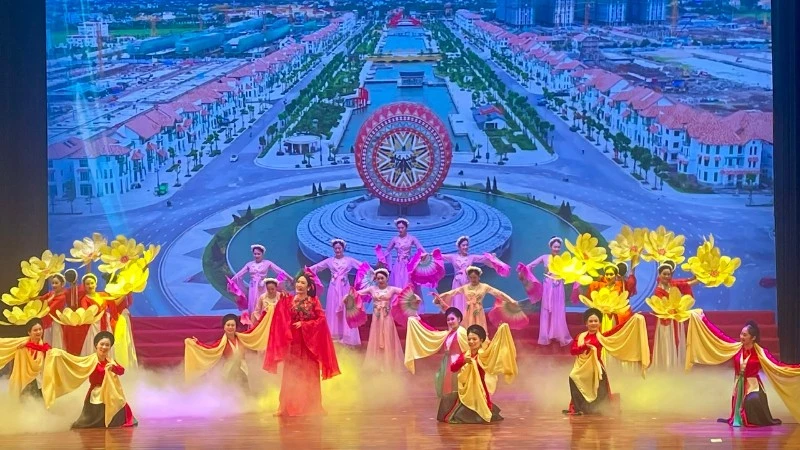Amid the broader landscape of Viet Nam’s emerging cultural and creative industries, fashion has been identified as one of 12 key sectors with strong potential and is now receiving focused investment for development.
Making a mark on global stage
Vietnamese contemporary fashion has moved beyond its traditional role as an outsourcing destination and is gradually establishing itself as a creative industry—fusing traditional craftsmanship with modern design thinking to convey cultural and historical values, appealing to both domestic and international consumers.
Rather than chasing trends, many successful Vietnamese designers draw inspiration from traditional culture, use local materials, and “tell” stories about Vietnamese heritage through visual design language.
Over the past three years, many international celebrities have chosen to wear Vietnamese designs at film festivals, beauty pageants, music videos, and world tours. Designers like Do Manh Cuong, Thuy Nguyen, Le Thanh Hoa, Chung Thanh Phong, Nguyen Minh Tuan, and Tran Hung, as well as rising talents and brands such as Fancì Club, L Soul, La Lune, Bupbes, TimTay, and CoolMate, have gained popularity both at home and abroad, with products widely distributed in shopping centres and online platforms. Their growing success demonstrates that Viet Nam is not just a destination for manufacturing but a birthplace of fashion creativity.
Encouragingly, many of these designers focus on traditional culture and local materials, using design as a medium to tell stories about Viet Nam.
Another standout is designer Phan Dang Hoang (born 2000), who has successively brought Vietnamese dó paper, ceramics, and paintings by master Nguyen Phan Chanh to Milan, the fashion capital of Italy. Hoang says, “My national pride is the inexhaustible source of my creativity. I want to help bring Vietnamese fashion to the world, so more people can appreciate its beauty and more opportunities can open for our designers and fashion lovers.”
At Viet Nam International Fashion Week 2025 (VIFW 2025), with the theme “Pure Style Shines”, many collections featured materials like silk, ramie, and linen, inspired by regional cultural heritages.
Beyond economic value, many designers view collaboration with artisans as a way to preserve cultural heritage. For years, designer Minh Hanh has incorporated brocade from the Northwest and Central Highlands into ao dai and ready-to-wear fashion.
Craft villages such as Lung Tam (linen in Tuyen Quang), Nam Cao (raw silk in Hung Yen), Quat Dong (hand embroidery in Ha Noi), and Ma Chau (silk in Da Nang) have become sources of material and inspiration for urban fashion. Numerous ancient patterns, traditional dyes, and weaving techniques that were lost or at risk of disappearing are now being revived and sustained through designer–community partnerships.
Catching up with digital shift
In addition to incorporating Vietnamese materials and silhouettes, another noteworthy trend is emerging: the impact of digital platforms on fashion retail. Small brands and startup designers are no longer burdened by the high cost of retail space in prime locations. High-quality designs accompanied by engaging content on social platform and e-commerce channels are helping Vietnamese fashion reach consumers more quickly and efficiently than ever before.
Young consumers increasingly favour “Made in Viet Nam” products with distinctive designs, eco-friendly materials, reasonable prices, and strong cultural narratives. Tourists from Thailand, Singapore, the Republic of Korea, China, and beyond are now embracing a new shopping trend—guided by viral videos from Vietnamese brands in Ha Noi and Ho Chi Minh City—as part of their cultural experience.
According to a survey at the 2025 Sustainable Consumption Forum (held in Ha Noi on July 2), 74% of Vietnamese consumers are willing to pay more for environmentally friendly products. Among them, young people aged 18–38, who account for 47% of the population, are a key driver of responsible consumption. They are not only looking for stylish clothing but are also drawn to the stories behind each design, the values each brand represents, and how it reflects their own identity.
Experts note that sustainable fashion in Viet Nam is being shaped by three core pillars: the use of organic and recycled materials; the revival of traditional crafts; and the development of a transparent supply chain. This journey requires long-term investment and multi-stakeholder collaboration.
According to a survey at the 2025 Sustainable Consumption Forum (held in Ha Noi on July 2), 74% of Vietnamese consumers are willing to pay more for environmentally friendly products.
At the industrial scale, some Vietnamese companies targeting global markets have successfully researched and developed fabrics made from pineapple leaves, lotus silk, coffee grounds, oyster shells, and more, offering benefits such as breathability and environmental friendliness.
However, the Vietnamese fashion industry still faces numerous challenges. Designer Thu Cuc, founder of Cuc Handmade, which uses fabric woven by the Thai ethnic group in Phu Tho and Nghe An, shared: “Handcrafted fabrics can cost three to four times more than industrial equivalents of the same colour and durability. Sustainable fashion requires high craftsmanship and consistent orders. Without that, it’s very difficult to survive.”
In addition, sustainable fashion must compete with cheap imported goods, while there is still a lack of credit support and targeted incentives. Disparities in consumer habits across regions also present major hurdles.
According to Le Thi Quynh Trang, President of Council of ASEAN Fashion Designers (CAFD), close coordination between designers, businesses, government agencies, and professional organisations is essential to shaping macro-level policies for the industry. She notes that while many Vietnamese designers possess strong creative vision, they must embrace technology, enhance competitiveness, and connect with global supply chains. Only then can “Made in Viet Nam” fashion truly emerge as a creative industry that reflects Vietnamese soul—intertwining people, culture, and the environment in every design.
